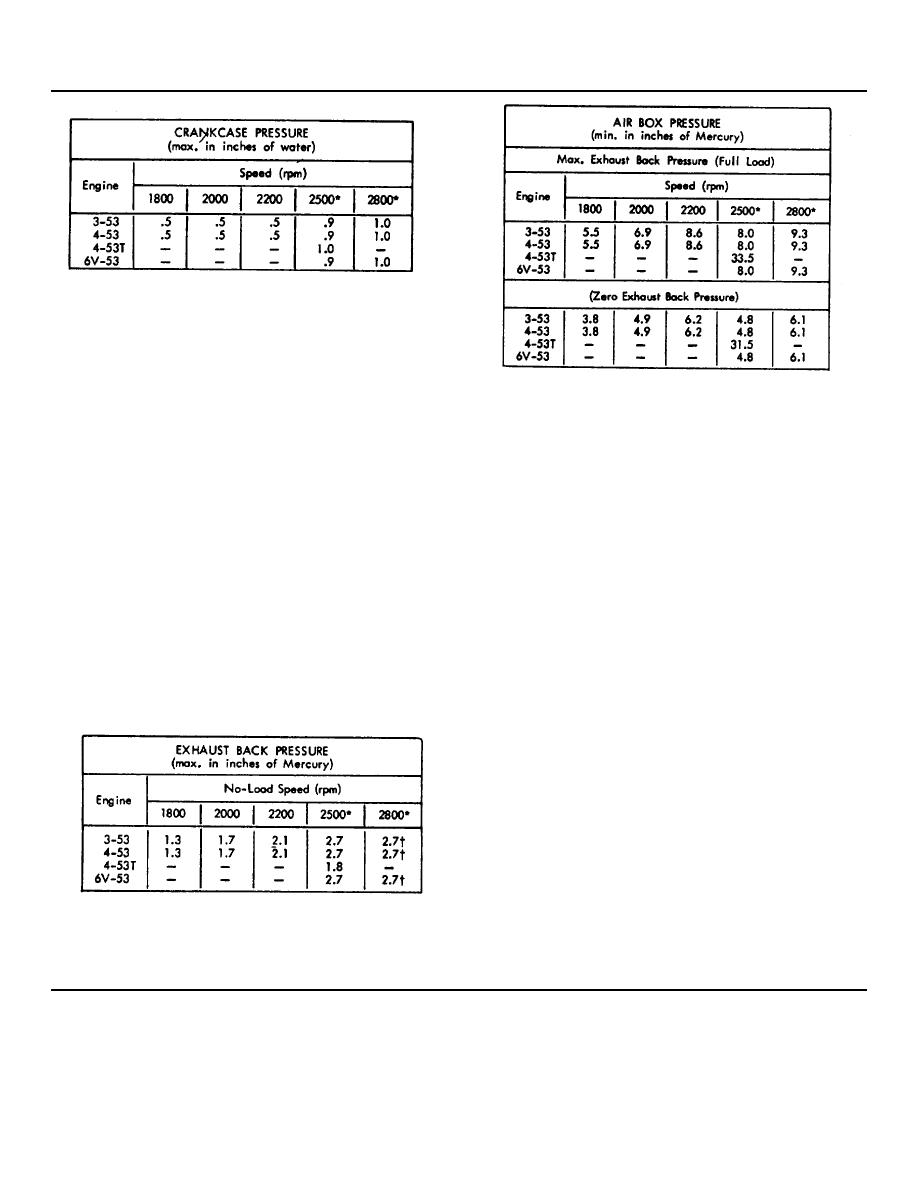
DETROIT DIESEL
Trouble Shooting
*Engines with four valve cylinder head(s).
TABLE 3.
Crankcase Pressure
The crankcase pressure indicates the amount of air
*Engines with four valve cylinder head(s).
passing between the oil control rings and the cylinder
liner into the crankcase, most of which is clean air from
TABLE 5.
the air box.
A slight pressure in the crankcase is
desirable to prevent the entrance of dust. A loss of
Exhaust Back Pressure
engine lubricating oil through the breather tube,
crankcase ventilator or dipstick hole in the cylinder block
A slight pressure in the exhaust system is normal.
is indicative of excessive crankcase pressure.
However, excessive exhaust back pressure seriously
affects engine operation. It may cause an increase in
The causes of high crankcase pressure may be traced
the air box pressure with a resultant loss in the
to excessive blow-by due to worn piston rings, a hole or
efficiency of the blower.
This means less air for
crack in a piston crown, loose piston pin retainers, worn
scavenging, which results in poor combustion and
blower oil seals, defective blower, cylinder head or end
higher temperatures.
plate gaskets, or excessive exhaust back pressure.
Also, the breather tube or crankcase ventilator should be
Causes of high exhaust back pressure are usually a
checked for obstructions.
result of an inadequate or improper type of muffler, an
exhaust pipe which is too long or too small in diameter,
The crankcase pressure may be checked with a
an excessive number of sharp bends in the exhaust
manometer connected to the oil level dipstick opening in
system, or obstructions such as excessive carbon
the cylinder block.
Check the readings obtained at
formation or foreign matter in the exhaust system.
various engine speeds with the specifications in Table 3.
The exhaust back pressure, measured in inches of
mercury, may be checked with a manometer, or
pressure gage, connected to the exhaust manifold.
Remove the 1/8" pipe plug, which is provided for that
purpose, from the manifold.
If there is no opening
provided, one can be made by drilling an 11/32 " hole in
the exhaust manifold companion flange and tapping a
1/8" pipe thread.
Check the readings obtained at various speeds (no load)
*Engines with four valve cylinder head(s).
with the specifications in Table 4.
† 3.8 for Marine engines.
TABLE 4.
Page 113

